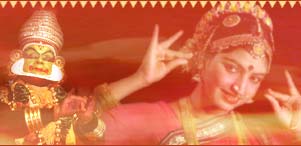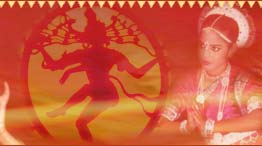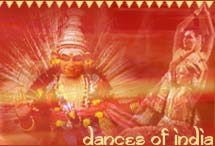One of the oldest surviving dance forms of India, Odissi classical dance is the dance form of the state of Orissa. The dance form dates back to 2200 B.C and evidences are found in the rock caves of Khandagiri and Udayagiri that are located in Orissa. A highy inspired, passionate, blissful and sensuous form of dance, Odissi is considered to be a dance of emotions and passions. Through the moves, the dancers emphasize on both the divine and human. A unique feature of Odissi dance is the Tribhangi, which divides the body into three parts; head, bust and torso. Orissa boasts of great cultural heritage. In the earlier times, the rulers of Orissa had built magnificent temples, which became the center of art and culture. It was around these temples that Odissi, one of India's scintillating dance-forms was born, nurtured and nourished. In the following lines, we have provided detailed information about the background and significance of Odissi dance.
History and Evolution
One amongst the oldest surviving dance forms, Odissi dance has its roots laid in the 1st century BC. In the earlier days, dancers were found depicting bas-relief in the hills of Udaygiri (near Bhubaneswar). Over the years, Odissa dance have been grouped under two categories; Mahari, and Gotipua. While the Mahari tradition is similar to the devadasi tradition, Gotipua is a style characterized by the use of young boys dressed up in female clothes to perform female roles which was a result of Vaishnava philosophy in Orissa in the 16th century
Significance
One of the oldest classical dance forms in India, Odissi is a highly stimulating, ecstatic form of dance. Such is the lyrical grace that once the performance has started, you would not be able to leave it in the middle. Odissi dance in addition to depicting stories of Lord jagannath, also narrates the stories of Lord Krishna. Performers through their mudras and rasas try to narrate the story in such a way that the message is put across in an entertaining manner.
Attire and Makeup
Like any dance form, Odissi has its own traditional costumes and jewellery. The saree is draped in a particular fashion creating a fan-shaped structure in the front. The most common saree used by dancers is the Sambalpuri sarees or Kotki sarees, both locally made. Only white metal jewellery is worn in Odissi, including earrings that covers the whole ear and resembles the shape of a peacock's feather.
Postures
All the Odissi postures are based on two fundamental stances, Tribhanga and Chouka. In Tribhanga, the body of the dancer is divided into three distinct parts: head, bust, and torso. The other posture is Chouka where a dancer creates four perfect right angles with the weight of the body being equally distributed throughout, resembling a perfect geometrical motif.
Music
Odissi has its own style and music, which is generally based on the compositions of Jayedeva. There are a number of musical instruments used to accompany the Odissi dance like Pakhwaj, tabla or mridangam. Other instruments which are commonly used are the bansuri (bamboo flute), the manjira (metal cymbals), the sitar and the tanpura.
Famous Personalities
Some of the famous Odissi dancers who have given Odissi a new definition include Late Sanjukta Panigrahi, the leading disciple of Guru Kelucharan Mahapatra. Other prominent dancers are Sonal Mansingh, Kumkum Mahanty, Aloka Kanungo, Sharmila Biswas, Madhavi Mudgal, Sharmila Mukherjee, Chitralekha Patnaik, Gangadhar Pradhan, Madhumita Raut and Jyoti Rout.




